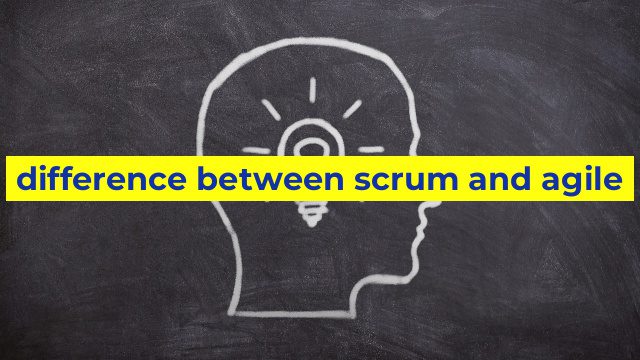Understanding the Differences between Scrum and Agile Methodologies
What is Agile?
Agile is a software development methodology that emphasizes collaboration, self-organization, and flexibility. It values working software over documentation, and customer satisfaction over contract negotiation. Agile encourages teams to continuously adapt to changing requirements and deliver increments of the software product in short time-boxed periods, called sprints.
What is Scrum?
Scrum is a subset of the Agile methodology, and it’s focused on delivering value in short iterations of work. It is an iterative and incremental framework that utilizes the Agile methodology principles to manage complex projects. It is a popular approach to Agile development that involves a self-organizing and cross-functional team that works collaboratively to deliver high-quality products.
The Key Differences
Scrum is a framework that is built upon Agile principles. While Agile has no specific prescriptions or methodologies, Scrum defines a set of roles, events, and artifacts to deliver software products in an Agile way. Here are some of the key differences between Scrum and Agile:
– Scrum is more structured than Agile. It has a defined set of roles, events, and artifacts, whereas Agile is more of a framework that allows teams to choose their own processes.
– Agile is more flexible than Scrum. Agile does not prescribe specific roles or processes, which allows teams to adapt the methodology to their specific needs.
– Scrum has a defined timeline for iterations of work, called sprints. Agile has no specific timeline, and each team defines its own iterations.
– Scrum has specific roles, including a Scrum Master, Product Owner, and Development Team. Agile has no defined roles, and team members can take on multiple roles.
Which Approach to Use?
The choice between Scrum and Agile depends on the specific needs of the project team. Agile is best suited for projects that involve a lot of change, while Scrum is more effective for complex projects with defined requirements. In general, Agile is best suited for small teams, while Scrum can scale to larger teams.
In conclusion, both Scrum and Agile are effective methodologies for software development, and they both prioritize collaboration, flexibility, and delivering working software. The key difference lies in the structure and level of flexibility, which makes one approach better suited for certain projects and teams than the other. Understanding the differences between Scrum and Agile can help teams choose the right approach for their specific needs.
Table difference between scrum and agile
| Scrum | Agile |
|---|---|
| Scrum is a methodology or framework based on Agile, which is used to manage and complete complex projects | Agile is a set of principles and values that can be applied to any kind of project or task |
| Scrum has a set of defined roles, including Product Owner, Scrum Master, and Development Team | Agile emphasizes self-organizing teams and encourages collaboration between customers, developers, and other stakeholders |
| Scrum uses a set of ceremonies, including Sprint Planning, Daily Scrum, Sprint Review, and Sprint Retrospective | Agile encourages continuous improvement and iterative development, and does not have set ceremonies or processes |
| Scrum is focused on the delivery of a potentially releasable product increment at the end of each Sprint | Agile is focused on delivering value to customers through incremental and iterative development |
| Scrum can be used for any kind of project, but is typically used in software development | Agile can be applied to any kind of project, including software development, marketing, and construction |


